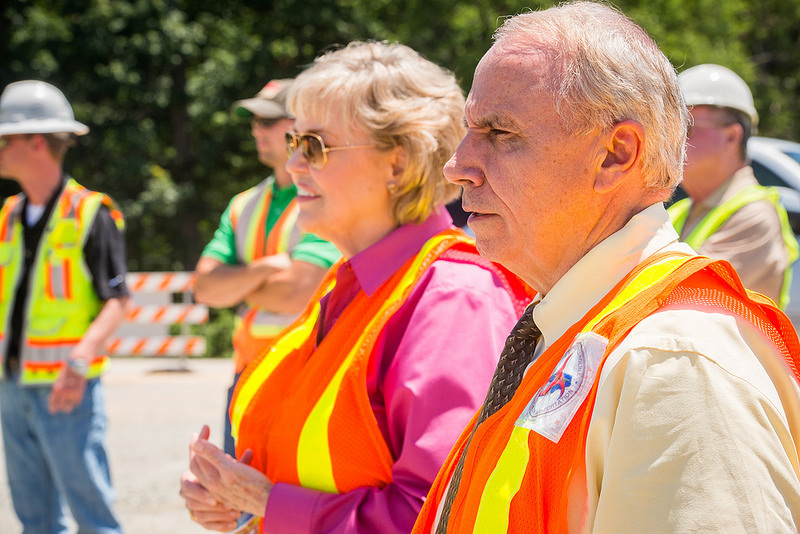|
The internet and social media make it easier than ever to spread information (factual or not) like wildfire. If your company or organization has big news to share, choosing to make a big announcement gives you more control over the message and tone of your news (rather than waiting for the media to find out on its own).
Here are three things to consider before making big announcements:
0 Comments
Difficult situations often produce the wrong response when it comes to media relations and crisis communications. The instinct to run and hide just won't cut it.
Your long term success will hinge on how well people see you as forthcoming. People judge character. They want to see someone who can be trusted, someone they can believe, someone they see as doing everything possible to fix the problem. Tell the truth, to the extent that you can. If there are details you're not allowed to discuss, explain why. In a nutshell: do the right thing. That includes responding in a timely manner. Mack Communications | @mack_comm Answering questions from reporters can be brutal. The questions can be sharp and direct, putting you on the defensive. You need your own defensive measures to stay in control of the interview.
One of the easiest to spot is the false premise. The question that's being asked is phrased in such a way that it may be impossible to answer and still get your point across. The best move to make is to rephrase the question. "What I think you're really asking..." you might say. Or, "What I think the real issue is...." By rephrasing the question, you answer the question you'd like to answer rather than the one the reporter asked. A press release is a great way to convey your announcement or news item, but it's often not enough to do the job. There are often other resources that reporters will need and want in order for them to effectively tell your story.
VISUALS Let's start with visuals, which can be anything from head shots of your CEO to shots of the factory floor to graphs depicting your latest quarterly results. Images are more powerful today than ever because most everything gets posted to media websites or Facebook. Even radio reporters who never had to worry about visuals in the past are now asked to snap photos and shoot video of the events they cover. Think ahead to what images will help make your story more compelling. What parts of your announcement can be told in pictures? Can you supply the images or allow photographers access to key places where they can get their own? It may be fall, but it's not too early to start thinking about the upcoming holiday season and whether there's an opportunity for you to make news. So much of news is generated by the calendar and is based on nothing more than a little creative thinking.
So, grab a legal pad and a pen and start making a list for ways you can generate a press release or photo op between now and the end of the year. Here are just a few examples:
Beautiful summer weather can make it tempting to hold your next press conference outdoors. What's not to like? Fresh air, maybe a cool breeze, plenty of room.
Not so fast. There are lots of gotchas when it comes to outside press conferences. The biggest one is the lack of control when it comes to outdoor conditions. Aside from the possibility of getting rained out (do you have a contingency location?), the outdoor press conference can cause a variety of issues. WIND Chief among the potential problems is the wind. A strong breeze can cause havoc with your script, even if it's in a binder. Even if you're able to maintain control of the pages, the distraction can throw you off and cause you to lose your focus. The wind can also do a number on your hair. Men are just as vulnerable as women. The problem is not simply your wind-blown appearance. It's a huge distraction to deal with at such an important time. A third problem with the wind is the noise it produces in microphones. Even with wind screens, your mic is bound to pick up some wind noise, and that can ruin an important sound bite. What's worse than a crisis at your company? A crisis with no crisis communications plan.
As we have counseled clients and here in The Mack Report, you really don't want to make a crisis worse by failing to address your communications needs while also trying to deal with the crisis itself. That's why a crisis communication plan can be worth its weight in gold. A crisis communications plan starts with making sure you've identified the key players who will address the media and have all of their contact information available. In addition, you need to consider any or all of the following: When it comes to deciding whether to hold a press conference or other kind of media event, there are definitely two mistakes to avoid. The first is overestimating the importance of your event. The second is underestimating the importance of your event.
Overestimating Let's face it. Everybody thinks their story is newsworthy and that the media will just naturally beat a path to your door. We see it all the time. The concern, however, is that this very well may not be the case. Your story may hold little interest among the media, no matter how exciting you try to make it. What kind of events fall into this category?  You may be tempted to pitch your latest widget as a great subject for a media interview. It's a new product that will do wonders, you think. How could it not make news? Stop the presses. Stop thinking about the product and your company. Stop thinking about yourself. Think, instead, about the viewers, listeners or readers you're trying to reach. What do they think? What do they need? What are they most interested in learning?  The best press conference is the one that results in the best press coverage, in terms of both number and tone of stories. What many people overlook are the details that it takes to get those results. Follow these eight steps and you'll improve your odds tremendously. 1. Select a newsworthy topic. The Media aren't there to promote you. They want news. 2. Choose a good backdrop. Holding a press conference on location (in front of the school, in a classroom) is almost always more effective than a conference room. |
tags
All
Archives
March 2019
|
Photos from Meet the Media Guru, Joseph.Morris, BoldContent, MDGovpics, Grzegorz Łobiński, Mr Moss, North Charleston, ITU Pictures, wistechcolleges, .v1ctor Casale., www.audio-luci-store.it, katielips, editor64, NeighborLink Fort Wayne, AMagill, timsackton, MyFWCmedia, Matt J Newman, Mr.TinDC, Skley, mikecogh, othompsonski, wayne's eye view, Elvert Barnes, woodleywonderworks, North Charleston, MoBikeFed, flossyflotsam, North Charleston, NYCDOT, US Mission Geneva, jjandames, aalborgstift, BurnAway, A. Germain, North Charleston, NCDOTcommunications, IAEA Imagebank, The Chapman Cultural Center, hitsnooze, Wiertz Sébastien, charliekwalker, cliff1066™, TheeErin, woodleywonderworks, dane brian, Aramil Liadon, 2010 World Wheelchair Basketball Championships, Ty Nigh, freddthompson, Nadia Szopinska, west.m, stormwarning., Bright Meadow, Giorgio Montersino, Chris Erwin, Aplomb, jfingas, joce01_y, Massachusetts Dept. of Environmental Protection, Kevin Walter, Andrew Feinberg, Yan Arief, kellypretzer, Korean Resource Center 민족학교, veDro - l'Italia al futuro, crdotx, US Mission Geneva, Joe Shlabotnik, esocialmediashop, Stephen Cummings, CarbonNYC, sidewalk flying, MoBikeFed, marksdk, Marco Raaphorst, Saleel Velankar, adactio, edkohler, World Economic Forum, USACE Europe District, stereogab, Florin Rosoga, MikeSchinkel









